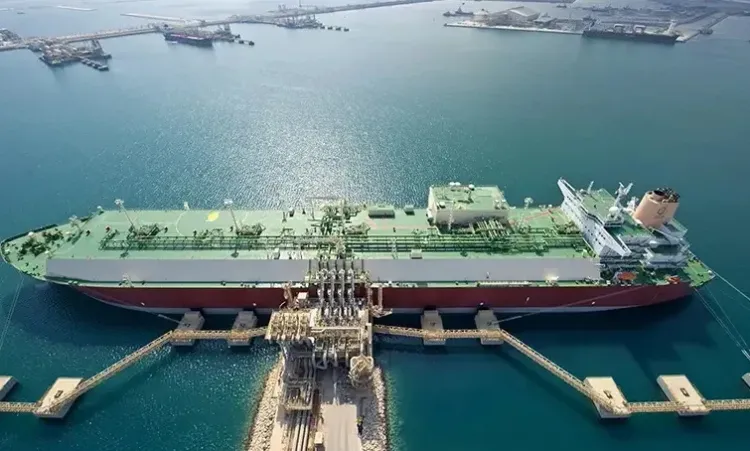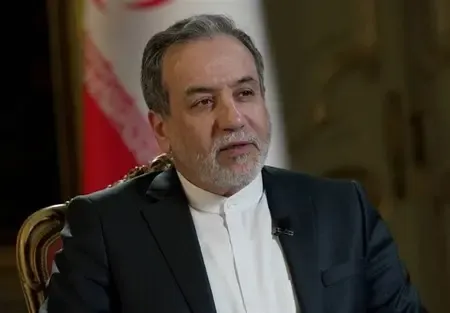Is Pakistan’s $5 Billion LNG Infrastructure Investment a Major Failure?

Synopsis
Key Takeaways
- Pakistan's LNG investment of $5 billion has become a significant liability.
- There is a mismatch between demand and supply due to high gas costs.
- The government overcommitted to 'take-or-pay' contracts without proper guarantees.
- Two long-term contracts with Qatar represent a financial commitment of up to $40 billion.
- The infrastructure includes four RLNG power plants and extensive pipeline networks.
New Delhi, Aug 18 (NationPress) Pakistan’s substantial $5 billion investment in LNG infrastructure aimed at importing gas from Qatar has emerged as a significant burden for the nation. A recent report from the leading English daily, The News International, indicates a substantial discrepancy between gas demand and supply, primarily due to the elevated costs associated with natural gas.
Initiated in 2014, Pakistan’s ambitious LNG energy project included the establishment of four major RLNG plants, port facilities, and a comprehensive pipeline network for distributing gas to consumers. However, nearly a decade later, the initiative has turned into a considerable setback.
The report emphasizes a lack of coordination between the Power Division and the Petroleum Division, stating that instead of achieving energy security, this ambitious strategy has led to a costly imbalance between supply and demand, ultimately becoming a multi-billion-dollar burden on Pakistan’s economy.
It also mentions that the government made extensive commitments to 'take-or-pay' contracts without ensuring demand guarantees and failed to account for the volatility of global LNG prices, overlooking the associated market risks.
To fuel the LNG power plants, Pakistan entered into two long-term contracts with Qatar, both supported by sovereign 'Take-or-Pay' guarantees. The first contract, signed in 2016, secured 3.75 million tonnes per annum (mtpa) for 15 years at 13.37% of Brent, costing between $16 billion and $25 billion. The second agreement, finalized in 2021, added another 3 mtpa for 10 years at 10.2% of Brent, incurring an extra cost of $10 to $15 billion. Collectively, these contracts represent a financial commitment of approximately $26 billion to $40 billion.
In a determined effort to alleviate ongoing power shortages, Pakistan launched a large-scale LNG project in 2014, which encompassed planning and constructing four major RLNG power plants - Haveli Bahadur Shah, Balloki, Bhikki, and Nandipur - along with the inauguration of the nation’s first LNG import terminal.
According to industry benchmarks for combined-cycle gas turbine (CCGT) plants and partial privatization data, the combined cost of these four LNG power plants is estimated to fall within the range of $3.5 billion and $5.5 billion, with a midpoint estimate around $4.5 billion.
Engro Elengy Terminal, Pakistan’s inaugural LNG terminal, was launched in 2014, with industry estimates indicating that the cost for the jetty and short pipeline was between $50 million and $100 million. Including the Floating Storage and Regasification Unit (FSRU) and related infrastructure, the total expenditure is expected to be in the range of $150 million to $250 million.
The Pakistan GasPort Consortium (PGPC) Terminal - the second LNG terminal in Pakistan - was designed with a capacity of 600 mmcfd, representing an investment of approximately $500 million, which includes the costs for the jetty, marine works, FSRU, and pipeline infrastructure linking the terminal to the national gas grid.
Moreover, a billion-dollar pipeline infrastructure was constructed to transport RLNG from Port Qasim in Karachi to four RLNG power plants in Punjab. This system initiated with a 24 km pipeline from the Engro terminal and a 14 km pipeline from the GasPort terminal, both integrated into a significantly upgraded SNGPL network spanning roughly 1,100 km to Punjab. The total cost for this transmission network is estimated to be between $800 million and $1 billion, as outlined in the report.









